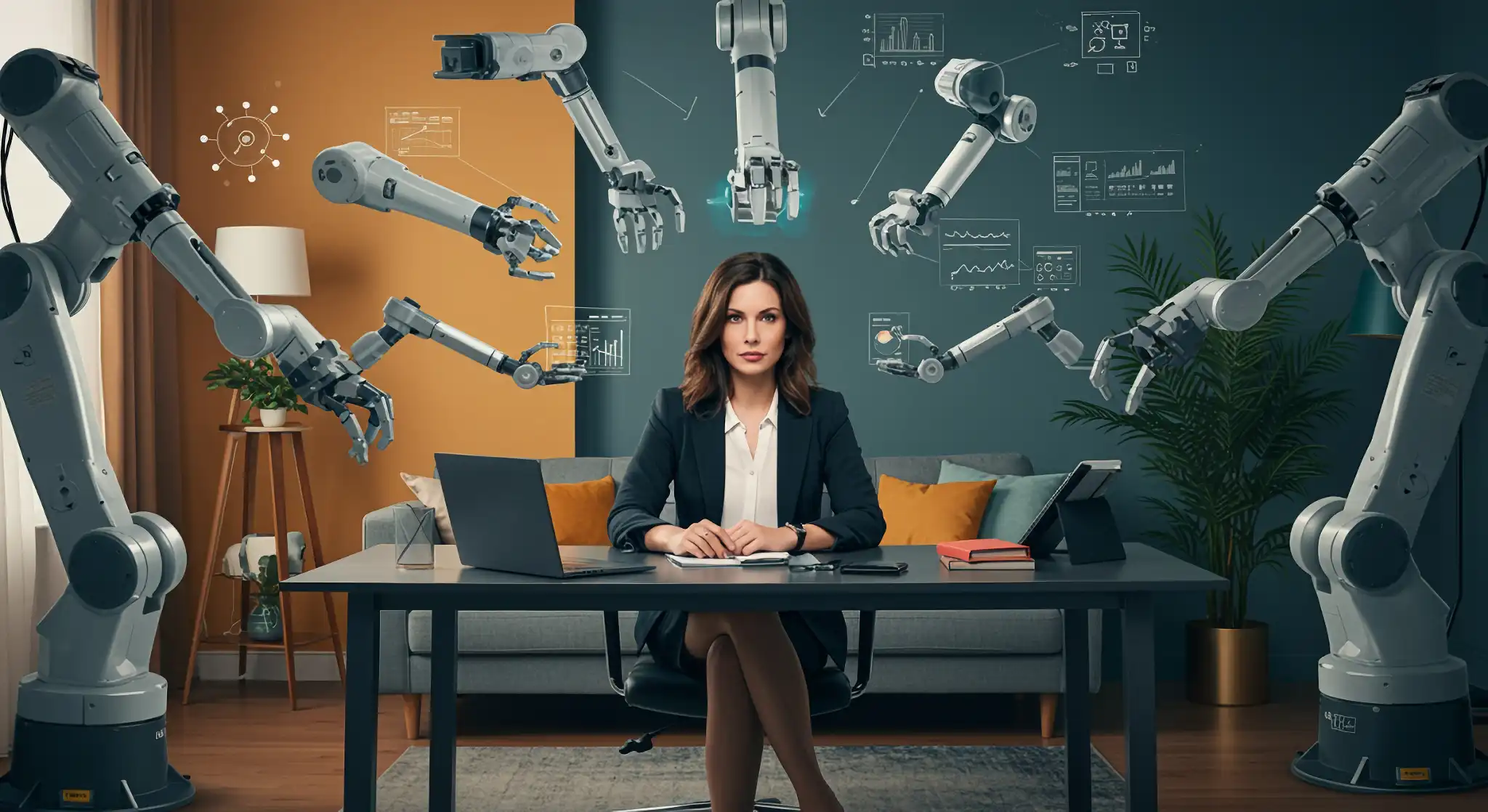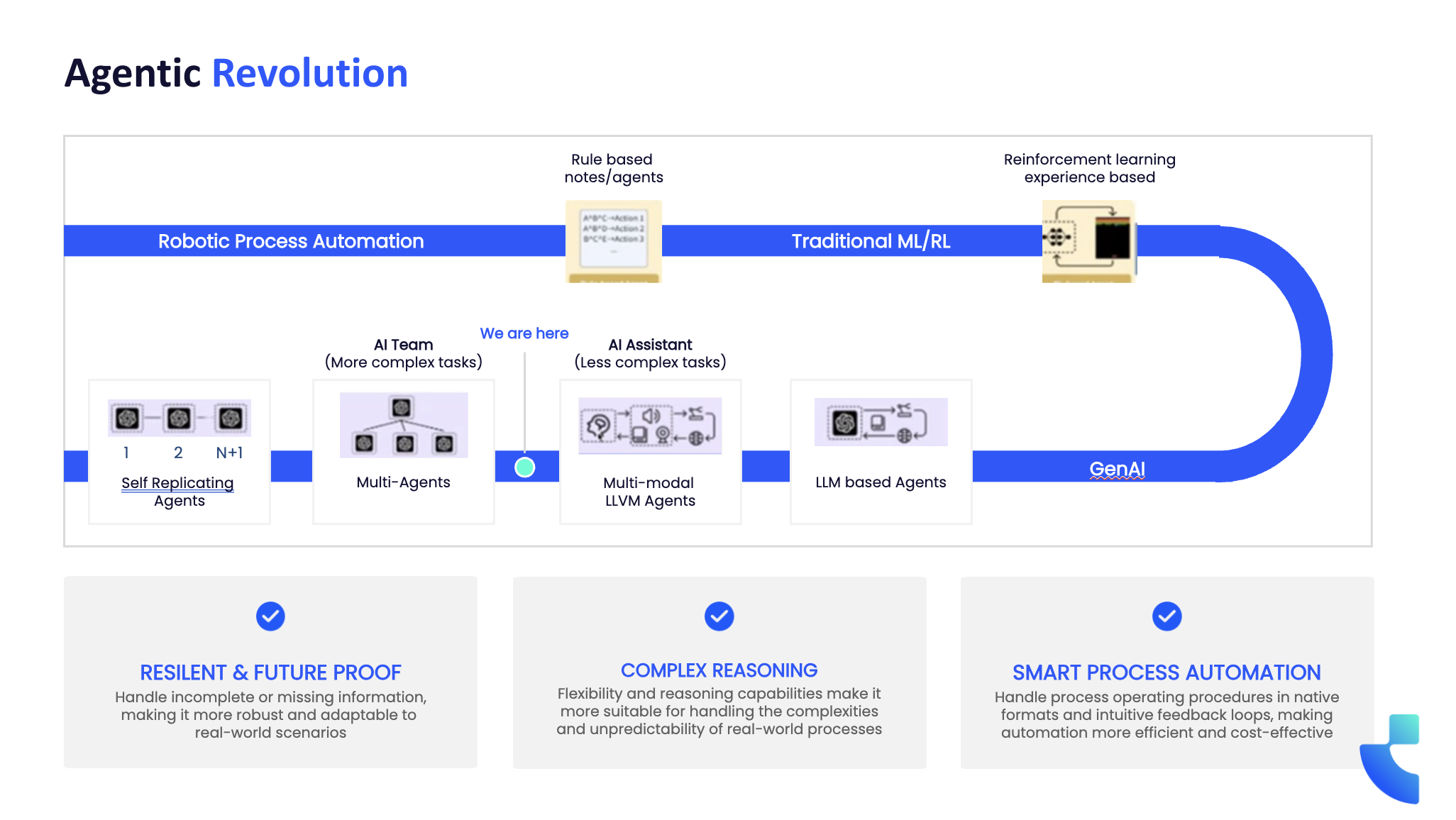By
calab.ai
May 5, 2025
•
4
min read

History doesn’t repeat itself — but it often rhymes.
Just as the steam engine sparked the Industrial Revolution, today Agentic AI is fuelling a new era of digital transformation.
We’ve moved from mechanical factory floors to digital manufacturing hubs powered by intelligent agents, Large Language Models (LLMs), and self-improving workflows. And just like those who first harnessed steam and electricity surged ahead of their competitors, those who embrace digital-first processes will own the future.
In the early 2000s, businesses turned to Robotic Process Automation (RPA) to tackle inefficiency.
RPA mimicked human actions — clicking, copying, pasting — automating basic, repetitive tasks across rigid workflows. It was the equivalent of replacing human hands on the production line with simple mechanical arms.
But just like early factories were limited by the power of steam alone, RPA quickly hit a ceiling.
It was brittle. Inflexible. Tied to predefined rules.

Enter Digitised Workflows — where cloud computing, APIs, and intelligent software started replacing manual hand-offs. Instead of pushing paper (or files) down a conveyor belt, systems could talk to one another, weaving steps into seamless digital threads.
And now, with the rise of LLMs and Agentic AI, we’re seeing something even more profound: Workflows that aren’t just automated — they are autonomous.
Systems can make decisions, learn from outcomes, and adapt without constant human oversight.
This isn't just automation.
It’s digital agency.
In the traditional manufacturing model, assembly lines dominated.
Humans and machines moved in fixed sequences, bolting parts together one by one.
Today, that model is rapidly breaking down.
Companies like Tesla have proven that those embracing intelligent robotics, digital twins, and adaptive manufacturing are setting the pace.
Factories are no longer long, rigid lines of manual tasks. They’re modular, digital, and infinitely reconfigurable.
Decisions that once took weeks are now made by software — in milliseconds.
The same shift is happening across all industries: from finance to healthcare, from logistics to media.
Manual processes simply can’t compete.
Those clinging to traditional, semi-digital workflows will fall behind — and quickly.
The equation is clear: The business that digitises most deeply, most intelligently, and most agentically — will win.
Not by patching up old systems. Not by “adding AI” to manual workflows like a quick fix.
But by rebuilding around digital-first, agentic processes from the ground up.
Where workflows are self-optimising.
Where systems handle exceptions and learn from outcomes.
Where humans set goals — and agents deliver results.
Ironically, some efforts — like those in the United States aiming to “rebuild” traditional manufacturing through government mandates — risk missing the real opportunity.
The world has already moved forward.
Manufacturing today shouldn`t simply be about bringing production back home.
The focus should be on the the digitisation of enterprises - Building new hubs to drive entirely new digital service ecosystems — one that acts as the modern equivalent of the industrial factory.
These hubs won't produce goods; they’ll create high-value digital services that will fuel our economic engines, digital enterprises.
The real opportunity lies in developing highly scalable digital service lines, driving significant economic impact, accelerating value creation, and strengthening global competitiveness.
And the key enabler? Not steam. Not government incentives.
But agentic AI — dynamic, self-organising systems that pull resources together, optimise production flows, and adapt in real time.
This is no longer about reviving the old factory model.
It’s about creating digital factories that build themselves, optimise themselves, and even redesign themselves — with minimal human intervention.
We’re not entering an era of better manual labour.
We’re entering an era of smarter digital labour.
And the winners will be those who realise the true revolution isn’t where we work — it’s how we work.